"Grow Up Great" is a registered mark of The PNC Financial Services Group, Inc.
Outdoor Tips
Step outside and go on a learning adventure with your child!

Explore Your Shadow
On a sunny day, go outside and have your child find his shadow. Ask what makes a shadow? Explore the shape of his shadow by moving around. Trace his shadow using sidewalk chalk. Go back and check the place where you traced his shadow later in the day. Have your child go back and stand in the same place.
Ask your child
- Can he fit his shadow into the same outline?
- Did the shadow change?
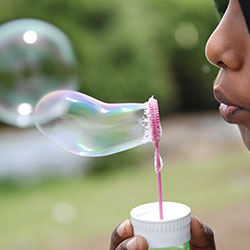
Have Fun with Bubbles
Make bubbles with your child by mixing 1 cup of water with 1 tablespoon of dishwashing liquid. Use a bubble wand or make your own by dipping one end of a straw into the solution and blowing into the other. Group several straws together to make even more! Count the bubbles together
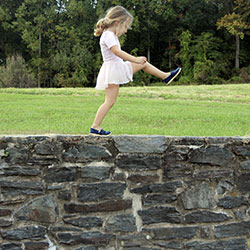
How Many Steps?
Ask your child how many steps she thinks it will take to walk to a place outside. Guess how many steps you will take, and then test it out by walking the distance and counting the steps How many steps did she take? Did it take her the same amount of steps that it would take an adult? Why or why not?
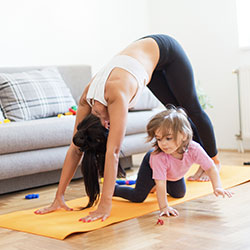
Make an Obstacle Course
Set up an obstacle course for your child to go through. Think about things that will require your child to run, walk, climb, crawl, or keep his balance. Some items you might use include: tables to crawl under, chairs or stools to go around, boxes for tunnels to crawl through, or outdoor play equipment. He will have fun conquering the course and also work on physical development at the same time!
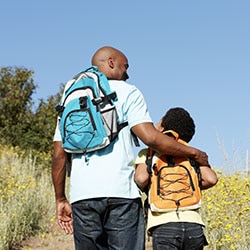
Take a "Listening Walk"
Go on a walk with your child. Tell her this is a walk where you will not do a lot of talking. You are going to be as quiet as you can to see how many sounds you can hear. After the walk, ask your child if she heard any
- Animals?
- People?
- Cars/trucks?
- Insects?
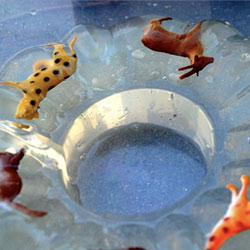
Get Creative with Storytelling
Collect some small, waterproof toys and place them in a plastic container. Fill the container with water and put it in your freezer. The next day, take the ice outside. The toys will start to be released from the ice as it melts. Tell a story using each object as it is released. Telling stories together helps your child understand the parts of a story (beginning, middle, and end).
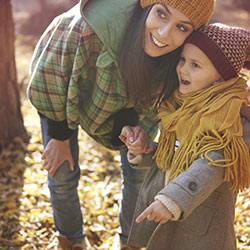
Play the Opposite Game
As you are playing outside, take turns naming the things you see. Then, try to think of the opposite of those things together. For example, you could say “I see a BIG tree!” and your child could add “I found a SMALL tree.” Naming opposites is a fun way to strengthen his vocabulary and understand the world around him.
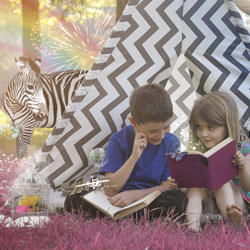
Create a Safari Adventure
Take a walk around your backyard or your neighborhood. Look around and talk about the types of animals you see. When you get home, encourage your child to draw pictures of the animals you saw. Discuss the animals and where they live.
- Do they live in the ground?
- In a tree?
- In the water?

Make a Backyard Dig Site
Explore what’s in your backyard by giving your child a small area to dig in the dirt. Use a small shovel or gardening tool to move the dirt around. Look for plants, rocks, insects, seeds, and anything else you can find. Once she has found a few items, talk about them.
Ask your child
- What shape is it?
- What color is it?
- What does it do? Or What is it used for?
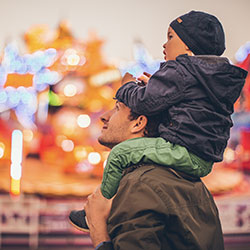
Attend Events Together
Find fun events in your community. Plan to attend an event together. Before you go, talk to your child about what you might see. If you are going to an outdoor festival, you might see games, people, booths, food trucks, and even a parade.
When you talk about when you will go, discuss
- The month of the event.
- The day of the week you will go.
- The time you will leave.

